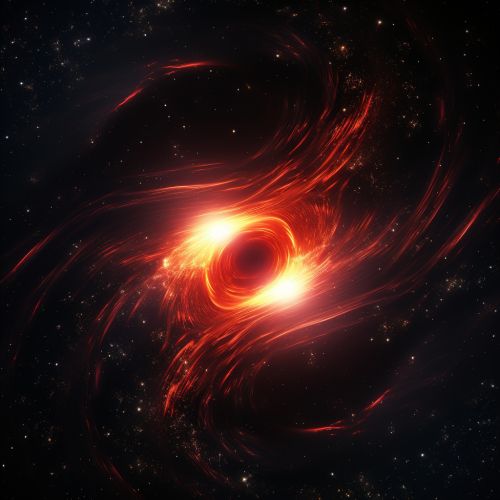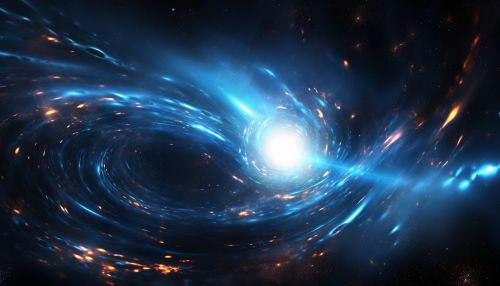Quasar
Introduction
A quasar is a highly energetic astronomical object found in the distant universe, believed to be powered by accretion of material into supermassive black holes in the centers of distant galaxies. Quasars are among the brightest and most distant objects in the known universe.
Discovery
Quasars were first identified as being high redshift sources of electromagnetic energy, including radio waves and visible light, in the 1950s and 1960s. The term "quasar" was coined by Chinese-born U.S. astrophysicist Hong-Yee Chiu in May 1964, in Physics Today, to describe these puzzling objects.


Physical Properties
Quasars are characterized by their high energy output. The spectral energy distributions of quasars are very different from those of stars, and they radiate across the complete spectrum, from low-energy radio waves to very high-energy gamma rays. Most quasars are brightest in their rest-frame ultraviolet wavelength of 121.6 nm, a property caused by the ionization of hydrogen from the Lyman-alpha transition. This peak in radiation output is known as the "Lyman-alpha forest".
Emission Mechanisms
The energy emitted by a quasar derives from mass falling into a black hole in the center of a galaxy. As the black hole accretes this matter, it forms an accretion disk of intensely hot material around the black hole. The intense gravitational energy of the black hole converts this accreted mass into energy as per Einstein's mass-energy equivalence equation, E=mc^2, and this energy is then emitted as electromagnetic radiation, which we see as a quasar.
Role in Galaxy Evolution
Quasars play a crucial role in the evolution of galaxies. The energy output of quasars is believed to regulate the growth of galaxies through a process known as "feedback". In this process, the energy output from the quasar drives out large amounts of gas from its host galaxy, which can both trigger and suppress the formation of new stars.
Quasar Population and Distribution
Quasars are found throughout the observable universe, and their distribution in space reveals information about the large-scale structure of the universe. The study of quasars has revealed that they are located in regions of the universe with a higher than average density of galaxies, known as galaxy clusters.
